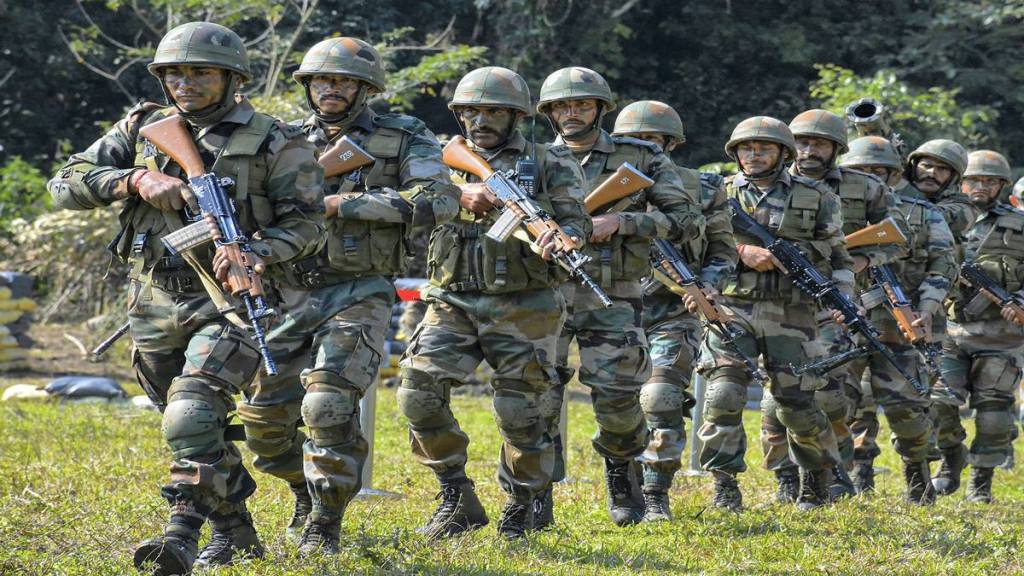Some political observers believe that the Modi government will never be able to live down the humiliation heaped on the country by China’s PLA forces intruding into Indian territory in March-April 2020. In an earlier essay (‘The Dragon in the Room’, The Indian Express, July 31, 2022), I wrote:
“It must rankle Prime Minister Modi that he did not get the true measure of Mr Xi Jinping when both sat on a jhoola on October 11, 2019 at Mammallapuram in Tamil Nadu. Even while the jhoola was swinging gently to the cool sea breeze, China’s PLA was in an advanced state of planning to intrude into Indian territory. On January 1, 2020, President Xi signed the order authorizing military action. PLA forces crossed the LAC into Indian territory in March-April 2020.”
Also Read: Across the aisle by P Chidambaram: Wannabe chief ministers
At an all-party meeting called on June 19, 2020, the Prime Minister, in his concluding remarks, said, “No outsider has intruded into Indian territory nor was an outsider inside Indian territory.” One would like to believe the Hon’ble Prime Minister’s words but there is overwhelming evidence to the contrary.
Memory loss
Mr Modi, of course, believes that the people of the country have forgotten those nerve-racking days. He is right. The people seem to have also forgotten other poor judgements and missteps — demonetization, the no-warning lockdown, the largest internal migration of the poor (some estimates put the number at 30 million), the man-made oxygen shortage, the pyres on river banks, the dead bodies floating down the river, the Namaste Trump rally and, even the most recent disaster, the collapse of the Morbi river bridge.
Since March-April 2020, the situation on the 3,488 km border shared by India and China has only become worse. The recent incident on December 9, 2022 in Yangtse in the Tawang Sector of Arunachal Pradesh underscores the bitter truth: China chooses the time and place of the intrusion into Indian territory and the government is clueless and without a policy. Thankfully, our forces are able to counter every intrusion suffering, in the process, casualties. In Galwan in June 2020, 20 soldiers lost their lives. In Arunachal Pradesh in December 2022, government has admitted that 7 soldiers were injured although there are other reports that suggest more soldiers were injured.
China chooses time, place
The question is, what gives China the courage and confidence to intrude into Indian territory at the time and place of its choice? That is the question, among others, that Parliament wanted to discuss on December 13, 14 and 15, but both Presiding Officers rejected the request on the ground that the matter was “sensitive”. It is a strange definition of parliamentary democracy that Parliament will be denied the opportunity to discuss a “sensitive” matter. If Parliament can discuss only non-sensitive matters, I suppose the next debate in the Rajya Sabha, under Rule 267, will be on the finer points of the FIFA Football World Cup Final match between Argentina and France that will be played today. (According to Mr Derek O’Brien MP, in the last six years, every request for a discussion under Rule 267 has been turned down in the Rajya Sabha). The English word is desuetude — falling into disuse. Rule 267 may as well be scrapped.
Also Read: Across the aisle by P Chidambaram: Blessed are the poor (but not all)
Parliament can be denied but the people cannot be denied. The people must know that:
- After several rounds of talks, China has conceded nothing on Hot Springs.
- China has refused to discuss disengagement of troops in Depsang Plains and the Demchok junction. According to The Hindu, the Chinese military remains on India’s side of the LAC in these two friction points.
- From eastern Ladakh to Arunachal Pradesh, China has strengthened its military presence and infrastructure (troops, weaponry, roads, bridges, communications, helipads and even settlements).
- The US Defense Department’s press secretary disclosed that the US had seen China “continue to amass forces and build military infrastructure along the LAC.”
- More buffer zones have been created. A buffer zone means that Indian troops can no longer patrol in that area (as it was doing before 2020). It can be expected that China will demand another buffer zone in Yangtse.
- Mr Modi met Mr Xi at the G-20 summit in Bali in November 2022. The video clip showed that the two leaders, dressed in Indonesian silk shirts, shook hands. Mr Modi did the talking. Mr Xi did not smile or frown and, apparently, said nothing of significance.
Whither de-coupling?
Meanwhile, despite the hostility exhibited by China toward India, India is importing from China four times more than what India exports to China. In 2021-22, the trade deficit stood at $73 billion. 174 Chinese companies have registered in India. 3, 560 Indian companies have Chinese directors on their Boards. The government’s claim of ‘decoupling’ from China has been blown to pieces. China is playing Chinese Checkers, not an unskilled game like dice. In Chinese Checkers, a player can move only forward or sideways. He can jump a peg but he must move forward. The ultimate goal is to move his pegs and fill the slots in the opposite (enemy’s) triangle. Since the government is in the dark about the game that is played by China, it is keen to keep Parliament and the people in the dark. That is why we don’t know what Mr Modi told Mr Xi in Bali and there was no debate in Parliament.


